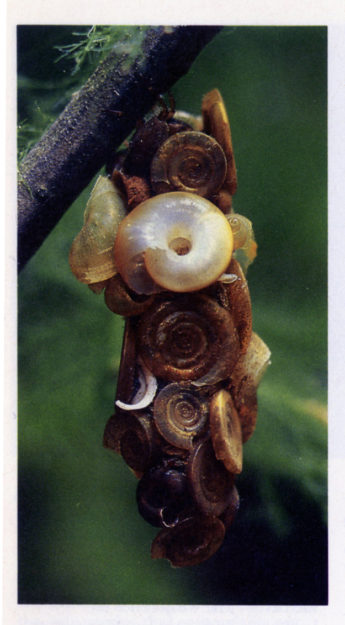Adrian Forsyth, The Architecture of Animals, Ontario, Camden House, 1989, p. 16.

Larval architects
For some insects, the larval stage of development is an active one, unlike the helpless state of grubs that rely on care provided by a colony. Caddis flies, ant lions and tent caterpillars provide for themselves. Completely independent, they build cocoons and trap the food necessary for their growth into adults.
The caddis fly is a master of disguise. Lying motionless at the edge of a stream, the caterpillar larva of the caddis moth lives in a silk tube spun from salivary material. The casing is carefully camouflaged and difficult to detect. Using its legs and sharp jaws, the larva cuts and arranges material on the outside of the casing. Some cover the tube with stones, twigs and shredded plants. Others use tiny snail shells or gravel and sand. If the species lives near fast-moving water , the larva anchors the casing with stones. As it grows, so does its sheath, and the larva moves around with its portable homes on its back.